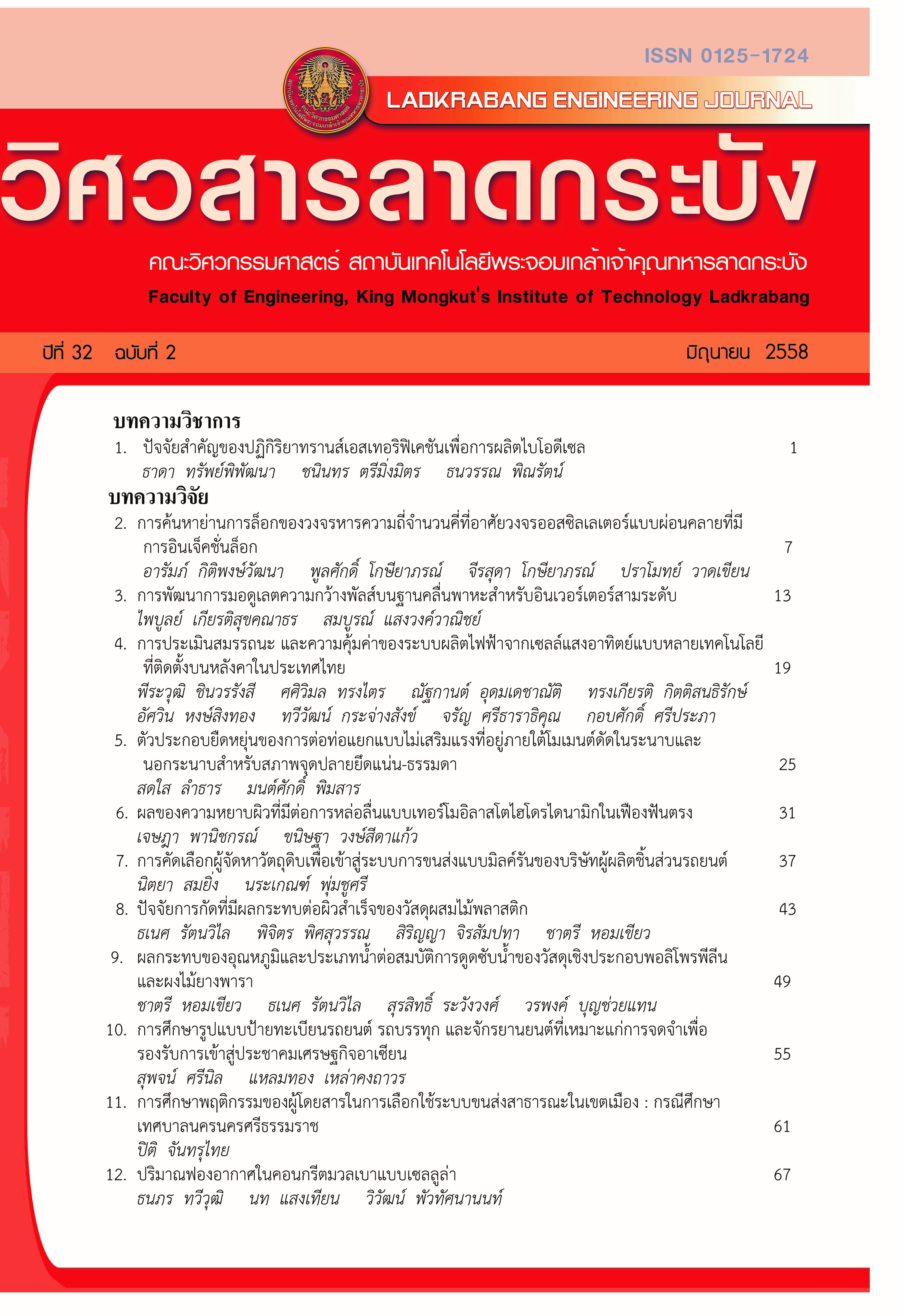Supplier Selection for Milk-run Logistics of an Automotive Parts Manufacturer
Keywords:
Automobile Industry,, Milk-Run Operation,, Vehicle Routing ProblemAbstract
This research presents an algorithm for supplier selection for Milk-run logistics of an automotive parts manufacturer in order to minimize total operating cost per year. The motivation of this research is because these manufacturers’ customers usually force them to reduce their commodity price every year. Milk-run systems are well known for reducing operating cost, thus manufacturers are interested in applying this idea into their organizations. However, most manufacturers have a variety of their suppliers’ characteristics and it may not be worthwhile to include all of them in the milk-run system. Therefore, this research proposes 2 methods in selecting milk-run suppliers: Total Enumeration and Heuristic method. This research demonstrates the efficiency of the algorithms from the result of applying proposed algorithms in 12 problem instances with different situations. From the result, it shows that both methods are well used in real situations. The overall cost different between total enumeration and heuristic method is 0.4% and we found that heuristic method performs better when suppliers have random location as compared to clustered locations while total enumeration gives better results when supplier locations are clustered.
References
[2] Thailand Automotive Institute. “Master Plan for
Automotive Industry 2012-2016,” Ministry of Industry Thailand, 2012.
[3] Automotive Intelligence Unit. Available URL: http://data.thaiauto.or.th/iu3/, (22 August 2014).
[4] Virojana Tantibadaro, “Supplier Selection with Data Envelopment Analysis,” Engineering Journal, Chulalongkorn University, Vol.4, 2010.
[5] Warin Keaitnukul and Sittichai Choetchumalaikit, “An Applied Fuzzy Set Theory to Quality Function Deployment for Supplier Selection: A Case Study of Plastics Pipe Factory,” Thai Value Chain Management and Logistics Conference, 2008.
[6] Rezaei J and Ortt R, “Multi-Criteria Supplier Segmentation Using a Fuzzy Preference Relations Based AHP,” European Journal of Operational Research, vol.225, pp.75–84, 2013.
[7] Z.H. Che and H.S. Wang, “A Hybrid Approach for Supplier Cluster Analysis,” Computers and Mathematics with Applications, vol.59, pp.745-763, 2010.
[8] Chuah K.H and Yingling J.C, “Routing for Just-in-Time Supply Pickup and Delivery System,” Transportation Science, vol.39, pp.328-339, 2005.
[9] Ruiz R., Maroto C and Alcaraz J, “A Decision Support System for a Real Vehicle Routing Problem,” European Journal of Operation Research, vol.153, pp.593-606, 2004.
[10] Peterson B, J.V.H Willem and Kekre S, “Flexible Milk-Run for Stochastic Vehicle Routing,” Carnegie Mellon University, 2010.
[11] George B. and Dantzig, “Discrete-Variable Extremum Problems,” Operations Research, Vol. 5, No. 2, pp. 266–288, 1957.
[12] M. Solomon. Available URL: http://w.cba. neu. edu/~msolomon/ problems.htm, (3 October 2014).
Downloads
Published
How to Cite
Issue
Section
License
The published articles are copyrighted by the School of Engineering, King Mongkut's Institute of Technology Ladkrabang.
The statements contained in each article in this academic journal are the personal opinions of each author and are not related to King Mongkut's Institute of Technology Ladkrabang and other faculty members in the institute.
Responsibility for all elements of each article belongs to each author; If there are any mistakes, each author is solely responsible for his own articles.






